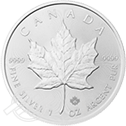What Is Bullion?
Is it the big geometric shaped gold bars we’ve seen stacked in a James Bond movie? Is it pirate ship gold fished from a shipwreck at the bottom of the ocean?
Gold bullion is physical gold—typically gold bars and coins—with a minimum purity of 99.5% for gold bars and typically no less than 90% purity for gold coins. Investors normally seek gold bullion because of its ability to:
- Store value
- Diversify a portfolio
- Serve as an inflation hedge
- Provide a safety net as a safe haven asset
The value of physical bullion stems from its gold content. Except in rare cases, bullion does not appeal to collectors.
Bullion’s primary uses are in the jewelry and investment industries.
Jewelry manufacturers acquire bullion in the form of ingots—pure metal cast into a shape fit for transportation and processing. They add other metal alloys to achieve the desired karat and then produce the jewelry.
Individual investors typically acquire gold and silver bars and coins to keep on hand. They generally self-store their gold.
Investors in IRA-eligible gold and silver store their holdings in the confines of a precious metals IRA, also known as a Gold IRA and Silver IRA.
Central banks own 20% of all the gold ever mined. They use gold as a store of value, to pay international debts, and as a lending vehicle.
Bullion Banks
Bullion banks lend gold in much the same manner that traditional banks lend money. Bullion banks also act as intermediaries between gold lenders and borrowers.
Bullion banks participate in the many aspects of the gold market, including:
- Trading
- Hedging
- Clearing
- Risk management
- Vaulting
The London Bullion Market Association (LBMA) is a London-based trade association representing the market for gold and silver bullion. Its membership is worldwide and comprises almost all bullion banks.
The LBMA uses an over-the-counter market model, meaning trading happens directly between two parties as opposed to via a centralized exchange. It comprehensively services the needs of central banks, private investors, gold producers, fabricators, miners, and mining companies.
Types of Bullion
Bullion isn’t limited to gold. The primary precious metals—gold, silver, platinum, and palladium—all have bullion representations.
Bullion takes several forms, each with different uses.
Forms of Bullion
Bullion precious metals include selections of bars, coins, and rounds:
- Rounds are precious metals coins with no denominational value. Made by private companies, rounds are generic discs that serve as a store of value.
- Bars typically trade at the lowest premiums over spot price and return the most gold per dollar. They can be cast or minted. Casting involves pouring smelted metals into casts and stamping the resulting bars with their purity and weight figures. Minted bars are cut from smooth sheets of metal and laser-engraved for a more finished look.
- Coins are made by government mints, which meticulously plan and process their forms. Coins have a legal tender value that is usually far below the intrinsic value of the metal. Due to their high production costs, bullion coins typically trade well above spot price.
Bullion Metals
Gold, silver, platinum, and palladium—the primary precious metals—are all available in bullion form.
Each rare metal has intrinsic value and can act as a mechanism for wealth preservation.
How to Purchase and Invest in Bullion
There are many ways to own and invest in bullion. Let’s explore some of the most common avenues.
Bullion Bars and Coins
Those seeking physical bullion buy bars and coins. Both are readily available at local coin dealers, and there is no shortage of online shops that sell bullion.
To have bars and coins directly delivered to your doorstep or set up a precious metals IRA containing bullion, be sure to choose a reputable dealer like Advantage Gold.
For the past decade, Advantage Gold has been educating clients and guiding investors through the precious metals acquisition process.
We often answer questions like, “What is gold bullion?” or, “What is silver bullion?” Our account executives know how to clearly explain not only the what but the why and the how.
The precious metals IRA—also known as the Gold IRA and Silver IRA—allows ownership of precious metals inside a tax-deferred account.
You can invest in physical gold, silver, platinum, and/or palladium with funds already allocated for investment.
Exchange-Traded Funds (ETFs)
Those who don’t want physical bullion but want bullion in their portfolio can buy shares of precious metals ETFs. ETFs trade on stock exchanges and link to contracts backed by silver or gold.
ETFs are easy to buy and sell. They are available on most online exchanges, and you can buy them just like you buy regular stocks.
ETFs don’t easily convert to physical metals—they’re more a play on the price and demand.
Futures Contracts
The Chicago Mercantile Exchange (CME) sells precious metals futures contracts. Futures give you the right to buy or sell a certain amount of a commodity, at a certain price, at a specific time in the future.
Investors either liquidate positions before maturity or take delivery of the purchased commodity.
Invest in Bullion
The world of bullion seems more intimidating than it actually is. Bullion simply is bars and coins made to investment-grade specifications.
Next time someone asks, “What is a bullion coin?” you can hopefully give a clear and concise answer.
Until then, call us or click the link if you have questions. An Advantage Gold representative will be happy to assist you with answers and show you how easy it is to add physical bullion to your portfolio.
Tags: what is a bullion coin, what is gold bullion, what is silver bullion


